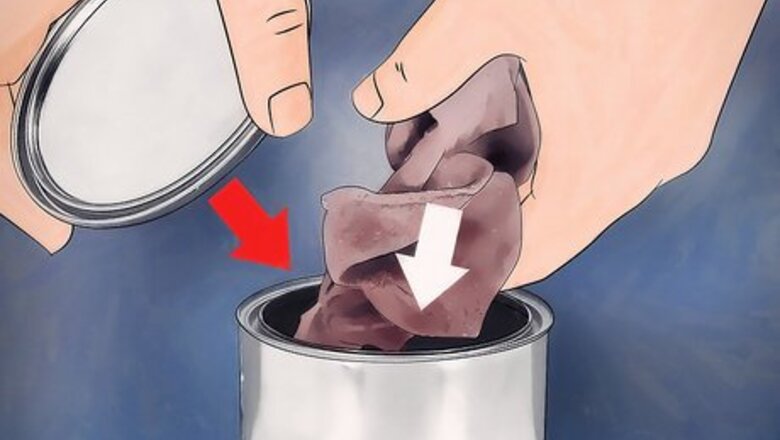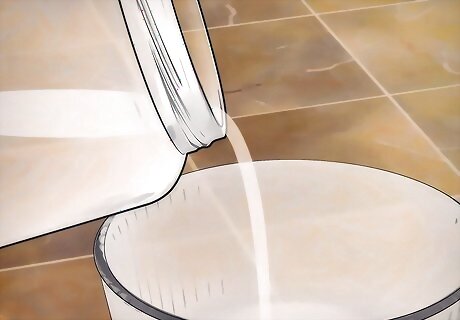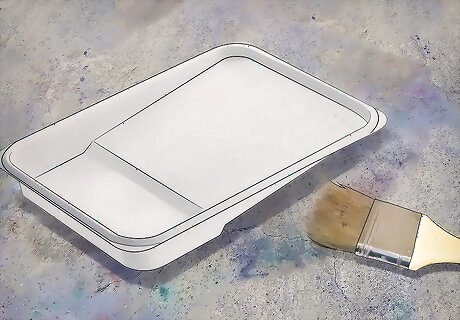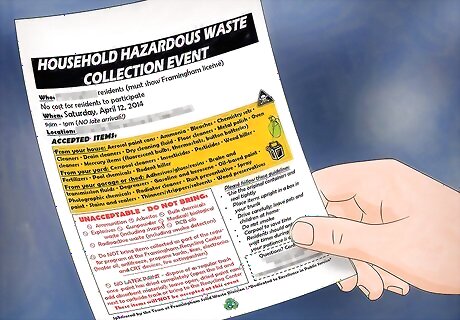
views
Disposing of Used Paint Thinner

Dispose of rags in a sealed metal container. Rags soaked in paint thinner may combust in air, causing a serious fire. Place them in a metal container with a tight lid, fill with water, and bring it to a hazardous waste collection site. If you do not have a watertight container, spread the rags out on a non-flammable surface in a ventilated area. Weigh them down with no bunching or overlap. Supervise them until they are dry. Seal in a fireproof container.

Leave dirty paint thinner to separate. There's no need to throw out paint thinner after one use. After soaking tools or brushes, leave the paint thinner to sit in a sealed, labeled glass container. Over time, the paint and other contaminants will settle to the bottom. This can take anywhere from a couple days to several months depending on how dirty the paint thinner is.

Extract usable paint thinner. Once the dirt has settled to the bottom, pour the clean top layer through coffee filters into a clean glass jar. Leave some space at the top of the new jar, seal tightly, and label it. Always wear heavy rubber or nitrile gloves when handling paint thinner.

Let the rest dry. Leave the container open and let dry in a well-ventilated area. Add cat litter, sawdust, or sand to speed up drying. Keep this container out of the reach of pets and children, and away from heat, flame, and flammable materials. If there is more than 1 cup (240 mL) of material left, use the method below instead. Bring it straight to a hazardous waste facility instead if the solvent contains a halogenated chemical (anything with "fluor-," "chlor-," "brom-," or "iod-" in the name). These chemicals are not commonly used in paint thinners, but can be found in related solvents such as paint strippers and degreasers.

Wrap dry thinner and put in trash. Once the material is solid and completely dry, wrap the paint thinner in newspaper, then seal in a plastic bag. You can now throw it away in the household trash. Many waste collection services will accept this, but there's a chance yours requires you to bring this to a hazardous waste site. You can call yours to confirm.

Throw away empty paint thinner containers. You can use the regular household trash if there is less than one inch (2.5 cm) of residue inside the container, and it has dried completely. Do not put them in the recycling. If there is still liquid inside, or a large amount of dried residue, take the container to a hazardous waste collection site.
Disposing of Excess Paint Thinner

Give the paint thinner away. The easiest way to get rid of unused paint thinner is to find someone who needs it. Offer it to a friend or neighbor, or donate it to a local organization that could use it for renovation projects.

Take the paint thinner to a hazardous household waste collection facility. Many municipalities have permanent sites available for the drop-off of hazardous materials like paint and paint thinner. Search for facilities in your area by contacting your local government, or using an online search such as Earth911.com in the US, or gov.uk/hazardous-waste-disposal in the UK. Most hazardous waste facilities will accept pain thinner in a sealed metal or glass container. Contact your local facility if you have a large amount of waste to dispose of.

Take the paint thinner to a hazardous household waste collection event. Many jurisdictions hold annual or semiannual events for the disposal of hazardous waste. These events can be found through your local government website. Many states in the United States have a Department of Environmental Protection (or a similar branch) that organizes these events.




















Comments
0 comment